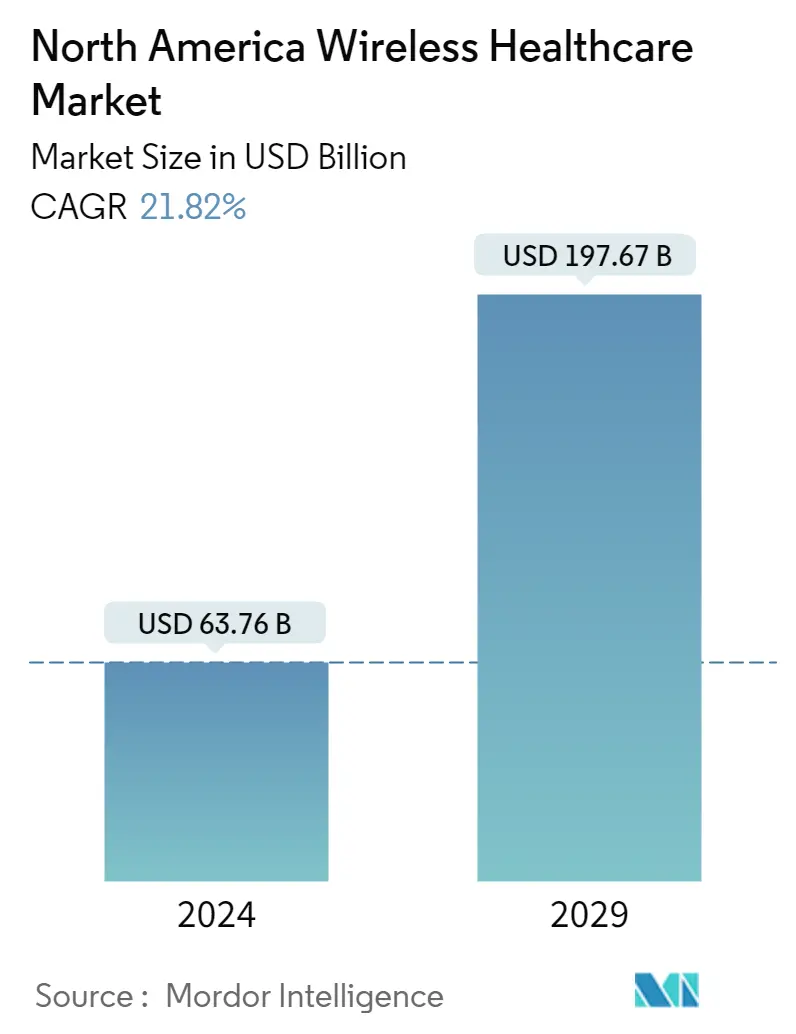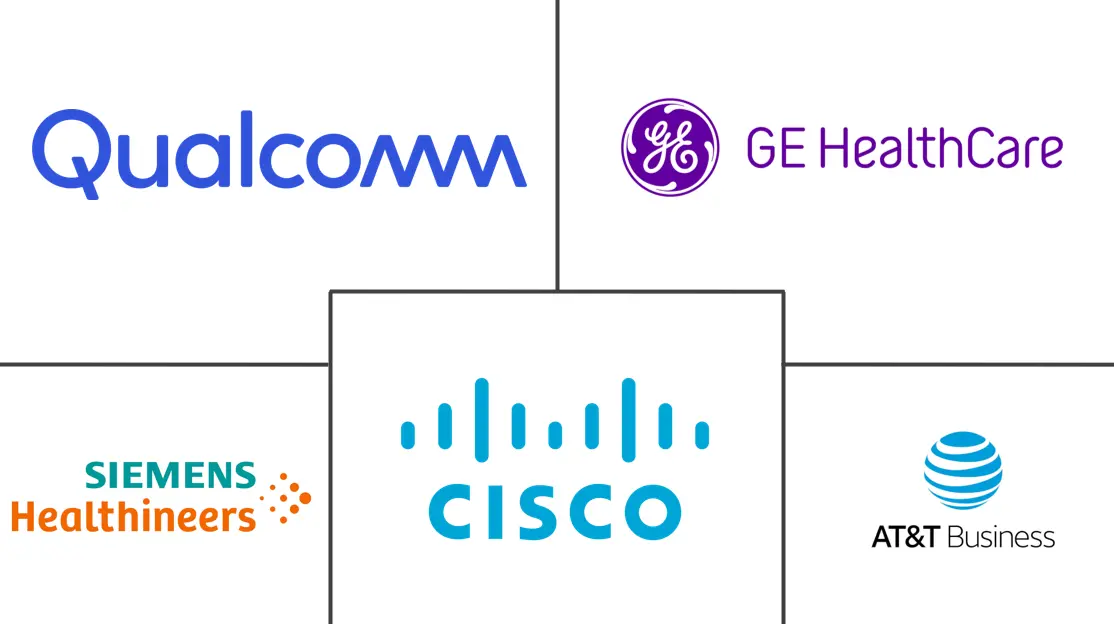Market Size of North America Wireless Healthcare Industry

| Study Period | 2019 - 2029 |
| Base Year For Estimation | 2023 |
| Market Size (2024) | USD 63.76 Billion |
| Market Size (2029) | USD 197.67 Billion |
| CAGR (2024 - 2029) | 21.82 % |
| Market Concentration | Medium |
Major Players
*Disclaimer: Major Players sorted in no particular order |
Need a report that reflects how COVID-19 has impacted this market and its growth?
North America Wireless Healthcare Market Analysis
The North America Wireless Healthcare Market size is estimated at USD 63.76 billion in 2024, and is expected to reach USD 197.67 billion by 2029, growing at a CAGR of 21.82% during the forecast period (2024-2029).
- The demand for remote patient monitoring (RPM) solutions is anticipated to rise due to the increased prevalence of chronic diseases, the aging population, and the need to reduce healthcare costs. Wireless devices and wearables that monitor patients' essential signs and health metrics remotely can lead to the early detection of health issues and enhance patient outcomes.
- Wireless radio frequency identification (RFID) technology also allows hospitals to track the real-time location of critical equipment and the condition of the equipment. The Shands Hospital in Florida experienced a 98.8% reduction in the hours spent searching for missing items by adopting wireless technology.
- There is an increased number of services and applications associated with the Internet of Things (IoT) across different end-user industry disciplines. IoT has evolved from RFID and wireless sensor network (WSN) technologies to more advanced technology, with the integration of cloud computing, Internet services, cyber-physical systems, and interconnections between hardware and software devices. Machine learning (ML) and AI capabilities are taking their skills to the next level, especially in the current healthcare industry.
- A worldwide shortage of healthcare workers is another parameter influencing the market dynamics. For instance, the United States alone is projected to face a shortage of 124,000 physicians by 2025, which is much less than the anticipated shortages in Asian and African regions. These factors indicate the need for upgraded medical facilities and improvement in the healthcare sector, which, in turn, is expected to drive the market, as advanced and connected medical equipment is likely to experience more demand.
- The development of the wireless healthcare industry has been significantly supported by ongoing developments in wireless communication technologies, such as 5G, the Internet of Things, edge computing, and artificial intelligence (AI). These technologies can enable faster and more reliable data transmission, real-time monitoring, and advanced analytics, enhancing healthcare delivery and patient outcomes.
- However, collecting, transmitting, and storing sensitive patient data through wireless healthcare technologies might raise significant concerns about data security and patient privacy. Breaches or unauthorized access to patient information can weaken trust and hinder the adoption of wireless healthcare solutions.
- Further, COVID-19 had a typically positive impact on the North America Wireless Healthcare market. The pandemic highlighted the importance of remote healthcare delivery and monitoring, accelerating the adoption of wireless healthcare technologies. Moreover, the need for social distancing and reducing in-person interactions during the pandemic led to a surge in telemedicine and remote monitoring services.
